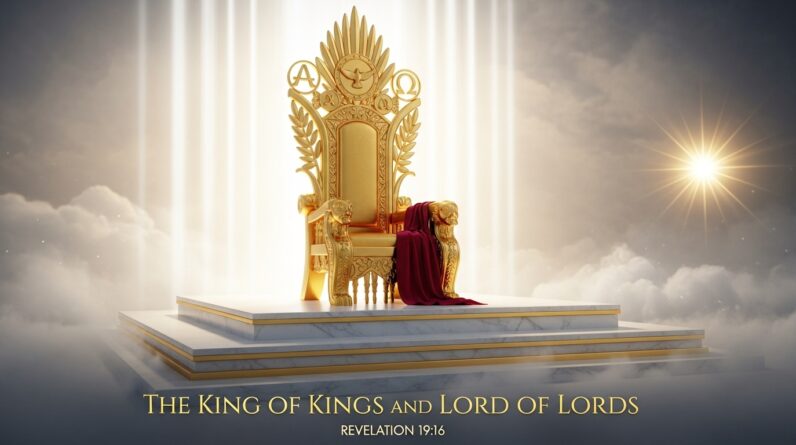Explore Genesis 11:1-9 and the Tower of Babel’s lessons on miscommunication, unity, and divine purpose. Learn timeless truths that resonate in modern life.
You’re about to embark on a fascinating journey through the story of the Tower of Babel as outlined in Genesis 11:1-9. This narrative is far more than just an ancient account of human ambition and divine intervention; it’s a timeless lesson about communication, unity, and the consequences of misunderstanding. By exploring this passage together, you’ll gain deeper insights into its historical and cultural backdrop, unravel the intended messages from the author, and discover how these ancient lessons still resonate in our modern lives. Join us as we unravel the themes and concepts that make this story a cornerstone of biblical teaching, and see how its principles apply to your journey.
The Tower of Babel in Genesis 11:1-9: Miscommunication and its Lessons
Welcome, dear reader! Today, we are diving into a fascinating Bible passage that deals with the Tower of Babel in Genesis 11:1-9. Our journey will explore the historical and cultural context, dissect the text verse-by-verse, and draw meaningful lessons from this ancient story that still resonate today. By the end, we hope you’ll gain deeper insights into the power of communication, unity, and divine purpose.
Purpose and Goal
The purpose of this lesson is to unpack the story of the Tower of Babel, shedding light on the themes of miscommunication and divine intervention. By understanding the historical context and key messages within this passage, you will be equipped to apply its lessons to your daily life. We hope you’ll see the importance of effective communication, cooperation, and aligning with a higher purpose.
Scripture Passage
Let’s start by diving into the Scripture passage itself. Here is Genesis 11:1-9 (NIV):
- Now the whole world had one language and a common speech.
- As people moved eastward, they found a plain in Shinar and settled there.
- They said to each other, “Come, let’s make bricks and bake them thoroughly.” They used brick instead of stone, and tar for mortar.
- Then they said, “Come, let us build ourselves a city, with a tower that reaches to the heavens, so that we may make a name for ourselves; otherwise we will be scattered over the face of the whole earth.”
- But the LORD came down to see the city and the tower the people were building.
- The LORD said, “If as one people speaking the same language they have begun to do this, then nothing they plan to do will be impossible for them.
- Come, let us go down and confuse their language so they will not understand each other.”
- So the LORD scattered them from there over all the earth, and they stopped building the city.
- That is why it was called Babel—because there the LORD confused the language of the whole world. From there the LORD scattered them over the face of the whole earth.
Background Information
Historical Context
To fully appreciate this passage, it’s vital to understand its historical backdrop. The story occurs after the Great Flood and before the call of Abram, during a time when humanity was beginning to repopulate the earth. According to Genesis, everyone spoke a single language, symbolizing a united human community capable of achieving great things but also potentially leading them astray.
Author and Audience
Traditionally, Moses is credited with writing the Book of Genesis. The original audience would have been the Israelites, who were journeying toward the Promised Land and establishing themselves as a distinct people. Through this passage, they would learn about their ancestors’ missteps and God’s expectations for them.
Content Analysis
Verse-by-Verse Commentary
- Verse 1: “Now the whole world had one language and a common speech.”A single language signifies unity and an absence of barriers. Communication was seamless, and collective understanding was at its peak.
- Verse 2: “As people moved eastward, they found a plain in Shinar and settled there.”Shinar, often identified with Mesopotamia, was a fertile land. It’s symbolic of human ambition and the quest for a settled, centralized society.
- Verse 3: “They said to each other, ‘Come, let’s make bricks and bake them thoroughly.’ They used brick instead of stone, and tar for mortar.”The people of Babel were innovative, using advanced building techniques of their time. Bricks signified progress and human ingenuity.
- Verse 4: “Then they said, ‘Come, let us build ourselves a city, with a tower that reaches to the heavens, so that we may make a name for ourselves; otherwise we will be scattered over the face of the whole earth.'”Their intentions, while ambitious, were rooted in pride and self-glorification. They sought to avoid dispersion, directly opposing God’s command to fill the earth.
- Verse 5: “But the LORD came down to see the city and the tower the people were building.”This anthropomorphic depiction of God underscores His active involvement and concern for human affairs.
- Verse 6: “The LORD said, ‘If as one people speaking the same language they have begun to do this, then nothing they plan to do will be impossible for them.'”God acknowledged their potential but also recognized the danger of unchecked human ambition without divine guidance.
- Verse 7: “Come, let us go down and confuse their language so they will not understand each other.”The divine plural “us” indicates a heavenly council. The confusion of languages was a strategic measure to curb their prideful unity.
- Verse 8: “So the LORD scattered them from there over all the earth, and they stopped building the city.”God’s intervention led to the dispersal of people, which re-established divine order and adherence to His original command.
- Verse 9: “That is why it was called Babel—because there the LORD confused the language of the whole world. From there the LORD scattered them over the face of the whole earth.”The name “Babel” is linked to the Hebrew word “balal,” meaning “to confuse.” This etymology captures the core lesson of the passage.
Cross-References
- Acts 2:1-12: The story of Pentecost, where the Holy Spirit enabled the apostles to speak different languages, serves as a counterpoint, emphasizing divine purpose in communication.
- Genesis 1:28: God’s command to “fill the earth” is foundational. The Tower of Babel story shows the consequences of defying this command.
Lessons to Learn
From this passage, we learn about the limits of human ambition when it seeks to eclipse divine purpose. Unity and collaboration are powerful, but when misaligned with God’s will, they lead to confusion and dispersion. The story underscores the importance of humility, obedience, and purpose-driven aspirations.
Themes and Key Concepts
Main Themes
- Human Ambition vs. Divine Purpose: The story contrasts human plans with God’s overarching will, showing the futility of endeavors that defy divine commands.
- Unity and Division: While unity can drive extraordinary feats, the misuse of collective power can necessitate divine intervention and corrective dispersion.
Key Concepts
- Language and Communication: The pivotal role of language in human cooperation and the profound impact of its disruption.
- Divine Intervention: God’s active role in guiding and correcting human actions to align with His purposes.
Moral and Practical Application
Personal Reflection
Reflect on areas in your life where ambition might be overshadowing purpose. Are there pursuits rooted in pride rather than genuine necessity or divine calling?
Community Application
In your community, consider the ways collective efforts can be more purpose-driven rather than self-serving. How can your community align more closely with higher values and divine intentions?
Action Plan
- Evaluate Ambitions: Periodically reassess your goals to ensure they are aligned with ethical and spiritual principles.
- Cultivate Humility: Embrace humility in your achievements, recognizing the role of divine guidance.
- Foster Purposeful Unity: In group endeavors, prioritize purpose and communal benefit over personal glory.
Life Application Questions
- How does the story of the Tower of Babel resonate with modern instances of miscommunication and its consequences?
- In what ways can you foster better communication and understanding in your personal and professional life?
- Are there areas where your ambitions have led you away from a higher purpose? How can you realign them?
Real-Life Examples
Consider the story of a multinational company that faced significant setbacks due to miscommunication between its diverse teams. By implementing better communication practices, cultural sensitivity training, and purpose-driven goals, they were able to turn things around, showcasing the timeless lessons from the Tower of Babel.
Think about community projects where ideas failed due to a lack of alignment on goals. Reflect on how successful initiatives aligned their diverse talents toward a unified, purposeful mission.
Conclusion
The Tower of Babel in Genesis 11:1-9 is more than an ancient story of miscommunication; it’s a profound lesson on the importance of aligning human ambition with divine purpose. Unity, while powerful, must be channeled towards higher goals rather than self-glorification. By understanding and applying these lessons, you can navigate personal and communal undertakings more effectively.
By understanding the Tower of Babel, we learn that communication is key. Keeping God’s intentions at the heart of our ambitions can guide us to achieve greater things, not just for ourselves, but for the community around us. Dive deeper, reflect, apply the lessons, and share your thoughts!








